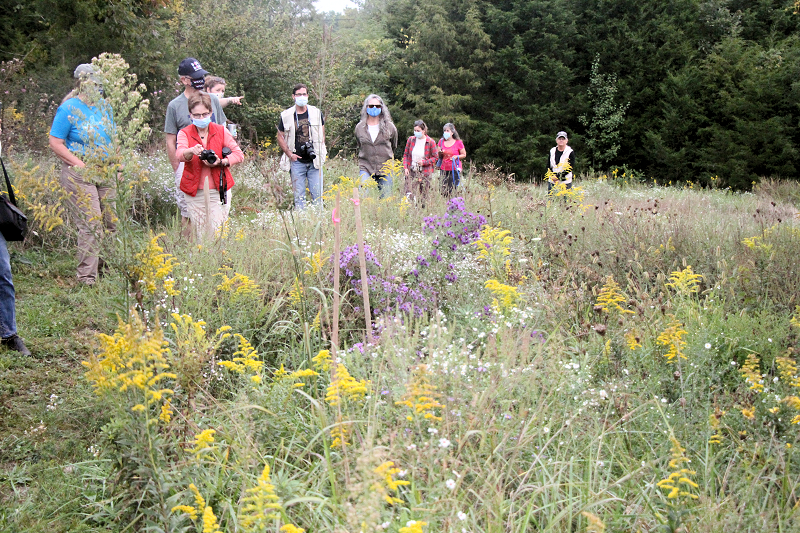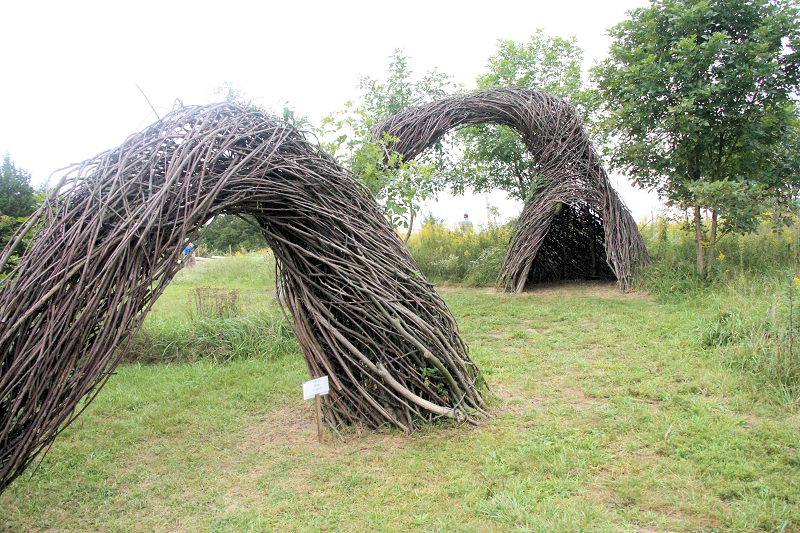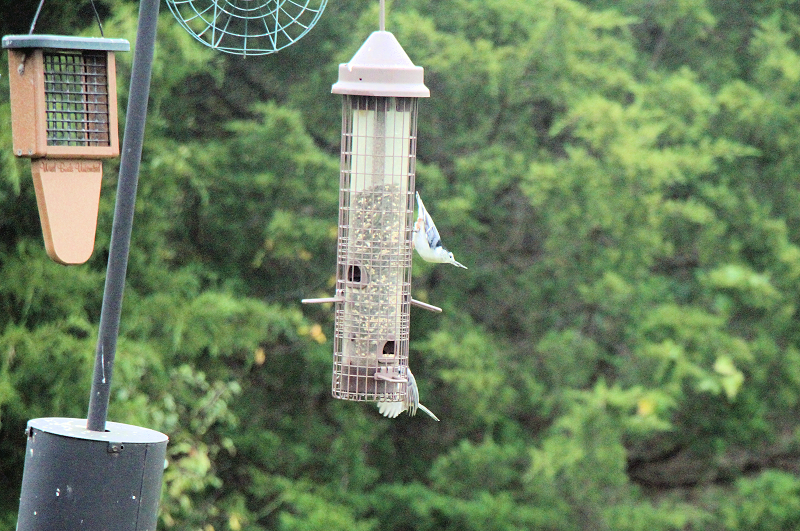


In the mid-1960s Melanie VanHouten’s family purchased a 100 acre tobacco farm just outside Frankfort, Kentucky. In 2008 Melanie and her husband began creating the Josephine Sculpture Park on 20 acres of the original farm, an additional 10 acres of the original farm was added to the park in 2018. At that time, no family had lived on the farm for several years. Some dumping had been done on the property and invasive species had become well established, especially Honeysuckle and Callery pears. The JSP website states the mission of the park: Our mission is to connect people to each other and the land through the arts. We provide creative arts and nature education to our community and transformative opportunities to artists while conserving the beauty of Kentucky’s native, rural landscape. Creating a sculpture park was a non-traditional way to use the property and share it with the community. This involved not only developing the sculpture/art aspect of the park but also managing the property to preserve, repair and enhance the natural environment. In a 2021 video available on the JSP website, Melanie VanHouten outlines the challenges of managing the natural habitat of the park as a part of the mission. This video provides insight into the JSP team’s is work as they face the challenges of managing the natural habitat. Josephine Sculpture Park (JSP) opened to the public in 2009 with 10 sculptures. I remember visiting it in the early days. It was difficult to find and we were the only visitors that day. Today JSP has over 80 works of art and has included artists from around the world in their Artist in Residence program. In addition, JSP offers art and environmental education through workshops, camps and school field trips to the park. Visiting JSP is free and can be done from dawn to dusk 365 days a year. In 2019 our Wild Ones chapter awarded a Public Garden Grant to JSP; we visited in the late summer 2020 to view the outcome. This September, we will visit the park again for a program with hear Joyce Bender who will speak about the birds and planting for birds at JSP. While birds at JSP (along with all inhabitants) benefit from all the current and future projects to enhance the habitat, one work of art is specifically about birds. This is a sculpture called Sounds of the Whippoorwill built by artist Justin Roberts and serves as a bird blind; nearby bird feeders and plantings attract birds to the viewing area. There are a number of other current land management projects underway to enhance the natural environment. One is to reforest the eastern ridge of the property. As an outgrowth of the 2018 Reforest Frankfort initiative 2,000 bare root trees were planted at JSP. In 2020, an Eagle Scout initiated a project to clear cedars from around a pond on the property and clear some of the cattails from the pond. The 10 acres added to the park in 2018 includes an area that will become a natural landscape meadow. Also on the new 10 acres is the oldest and largest tree in the park, a Chinkapin Oak they call the Grandmother Tree. Of course, along with projects to enhance the land, habitat conservation requires on-going care. Vigilant attention is needed to keep invasives at bay and trees planted need to be kept free of brush so they can thrive. JSP also has future projects planned such as restoring a natural spring to create a water feature. However, when I think of how far JSP has come during the 12 years it has been open to the public, I am aware that tremendous dedication and energy are at work here, and I’m looking forward to seeing how the park develops in the future.
Laura Cole
